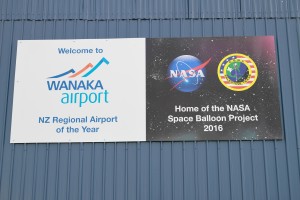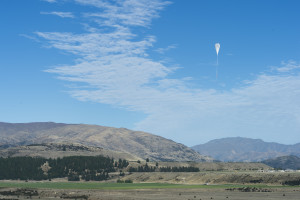NASA Columbia Scientific Balloon Facility technicians began processing a super pressure balloon Thursday, March 17, in preparations for launch from Wanaka, New Zealand, on a long-duration flight. The team is working to be flight ready by April 1.
While the first step seemed simple enough—placing the shipping crate containing the balloon on a flatbed trailer—with the balloon weighing in at 5,241 pounds (2,377 kg) and the shipping crate itself coming in at just under two tons (3,935 pounds or 1,785 kg)—the exercise was anything but.
The container is lined with steel plates to protect the balloon inside, a lesson learned from past missions. The balloon itself represents a significant investment at $1.3 million, thus the added precautions during processing.
The initial lift used a smaller crane, but technicians soon discovered that lifting the load at the distance required from the vehicle was marginal. With safety first in mind, an alternate approach was used. The larger crane on site, the same one that will be used for the balloon launch in April, was in use for various system checks of the Compton Spectrometer and Imager (COSI) payload. COSI is flying on this year’s test flight as a mission of opportunity; once in flight, COSI will probe the mysterious origins of galactic positrons, study the creation of new elements in the galaxy, and perform pioneering studies of gamma-ray bursts and black holes.
After the COSI systems checks wrapped up, the team set to work on lifting and placing the box on the trailer, as seen in this time lapse video. Now that the lift is complete, the team can now open the crate to access the top and bottom fittings on the balloon to begin processing.



